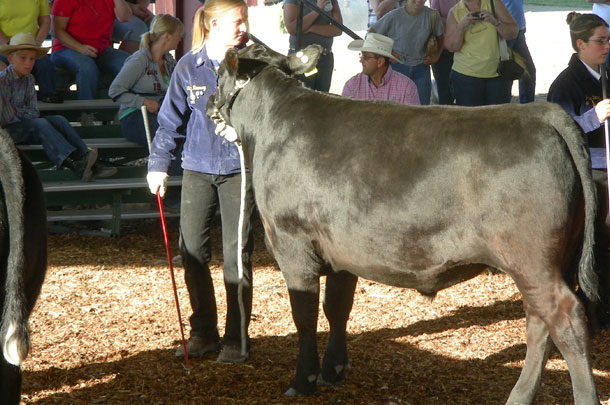Yesterday, as I walked through the livestock barns at the Jerome County Fair, I couldn’t help but think back on my time showing and selling an animal at the fair.
Unlike many farm kids, I wasn’t born with a show stick in my hand, and I never participated in 4-H. However, I did take an animal to the fair all four years I was involved with FFA. One year, I raised a hog, and the other three years, I raised a steer. Looking back, I probably should have stuck with a hog, but as my dad had recently ventured into the cattle business, I stuck my reputation on a steer. Being naive to the show world, my untrained eye picked what I considered the best steer calf out of my dad’s calves and began feeding it, but (as I learned later) not feeding it enough.
While walking through the hog barn this week, my husband pointed out the number of unfinished pigs. His quick, livestock-judging eye compared and contrasted the various pens of Hampshire, Yorkshire and Duroc breeds. In a well-tread conversation, we began discussing the drawbacks of allowing those underfinished animals to sell in our fat stock sale. I serve on the committee that runs the sale, and we have a rule that any animal that is awarded a white (third place) ribbon cannot sell. He argued that more animals should be awarded a white ribbon. In the past, the white ribbon had been reserved only for animals who were noticeably undernourished or phenotypically very incorrect. Simply underfinished animals generally were awarded a red ribbon and still able to sell. My husband argued that by allowing the youth to sell an underfinished animal, we were awarding poor behavior, and the youth were not learning the market demands of livestock.
The first year I showed a steer, I walked my decently halter-broke steer on the scale. He weighed 1,150 pounds. He was delegated to the lightest class. As I watched my fellow FFA and 4-H members tie their steers up in our barn, I silently criticized their showy, fat steers. Their bulging tailheads and rippling loins seemed wasteful to me. It took me several years of county fair sales to realize this wasn’t wasteful; it indicated a finished steer. I was never awarded a white ribbon, and I always sold my steer, but $1.35 per pound looked a lot different on a check than the $5 per pound the grand champion was awarded.
Part of the FFA motto is “learning to do, doing to learn.” It doesn’t promise success, and it doesn’t rule out failure. It promises learning by doing, and sometimes that means learning to “do” before learning to “do perfectly.”
I don’t know the best answer to the white ribbon debate, and your county fair may have a different rule than ours. Regardless, I am glad agriculture gives our young people the opportunity to learn, to grow and, sometimes, to fail. When I see the FFA and 4-H kids at our county fair, my faith in the future of agriculture is rejuvenated. And, looking back, I feel pretty lucky to have been that kid with the underfinished steer that still sold at the fair. ![]()
Erica Louder is a freelance writer based in Idaho. Email Erica Louder.
PHOTO: Erica Louder shows her steer at the Payette County Fair, circa 2006. Photo provided by Erica Louder.











